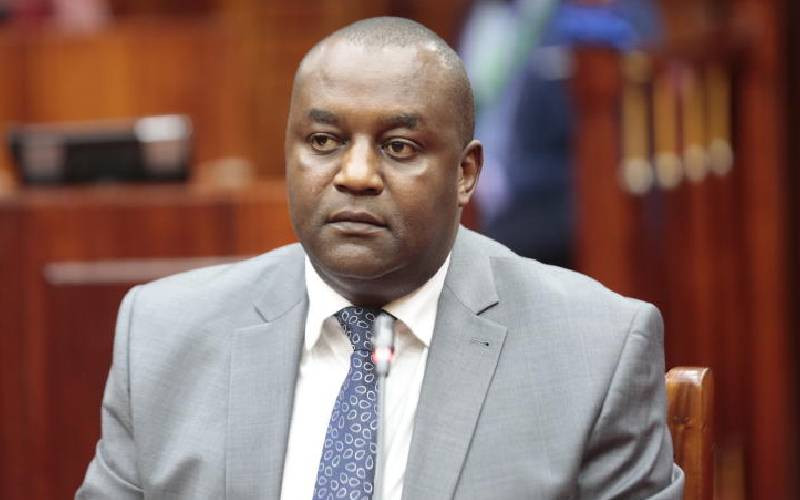Kenyans continue losing limb and life to road accidents. A key contributor to accidents, especially in urban spaces like Nairobi, is the apparent aversion by most people to using alternative means of crossing roads, namely footbridges.
Statistics tell a grim tale, both at the macro and micro levels and offer some interesting insights which must guide our interventions in tackling this national malaise.
We lose an average of 3,000 lives to road accidents annually. Breaking this down reveals interesting and consistent narratives. As at July 14, 2014, for instance, some 1,484 lives had been snuffed out by crashes on our killer roads, compared to 1,725 during a similar period last year. Of the lives lost so far since the year started, there were 692 pedestrians, 198 motorcyclists, 58 pedal cyclists and 82 passengers.
It therefore follows that pedestrians and users of intermediate modes of transport contributed some 1,030 lives to this ignominious list, which constitutes, significantly, over 60 per cent of the total number of crash victims.
This number could significantly come down if people started using foot bridges or flyovers as they are popularly known as a habit and a matter of course. It is quite disheartening that Kenyans will only use the footbridges when coerced by a figure of authority, say a policewoman.
Nairobi, for instance, has some 33 footbridges, which are more famed for their dereliction and non-use as opposed to serving the purpose for which they were constructed, of course at great cost to taxpayers, in the first place. It is not uncommon to see a Nairobian dashing across the road, despite an unused foot bridge standing in all its majesty overheard.
Most Nairobians would rather be caught dead (and many actually are increasingly being found in this state!) than be seen using the footbridges that have been constructed expressly for their convenience so that they can safely cross roads without putting their lives and those of other road users in jeopardy.
The phenomenon of pedestrians crossing roads at non-designated points and causing fatal crashes has become so commonplace in Nairobi that it might as well be part of the city’s wallpaper. Since January 1, 2014, over 100 pedestrians have died in Nairobi alone due to road traffic crashes.
This need not be the case. The National Transport and Safety Authority (NTSA) has embarked on a programme to reverse this unfortunate trend.
As a first step, the NTSA has initiated a project whose end-game is the rehabilitation of all footbridges and pedestrian tunnels in Nairobi. The project, which is already active in Nairobi, involves cleaning the facilities and providing lighting so as to make the facilities convenient enough and safe for pedestrians to use at any time.
NTSA is implementing the project, which has already seen us clean the footbridges at Nyayo Stadium, Madaraka, Wilson Airport and Kenyatta Market.
This will not only nullify the perception that the footbridges are too unhealthy and unsafe for human use, it shall also somehow incentivize the use of these facilities. Most pedestrians who choose not to use foot bridges often cite lack of cleanliness and insecurity as their major reason for dicing with death, sometimes with disastrous consequences.
But like all good infrastructure, the footbridges only make sense if they are utilized by those they are meant to serve. A good footbridge is just that: an object of engineering and will serve as no more than an ornament till it is able to gather a critical mass of users. Hence our appeal, as NTSA, is to pedestrians to ensure that they use the footbridges and tunnels once rehabilitated, instead of crossing roads at non-designated places so as to help save lives.
We are working closely with the Traffic Police to ensure that pedestrians who cross roads instead of using foot bridges and tunnels are arrested and prosecuted. This will engender a strong deterrent element.
Stay informed. Subscribe to our newsletter
But eventually, it is up to us as pedestrians to decide. It is not lost on us that the switch from crossing the road at any point to crossing only at foot bridges will require a massive mind shift among citizens, something in which we are already engaged.
Reducing road accidents is a duty for all of us. It will take a multiplicity of tactics, including offering an alternative and viable ways of crossing the road, besides making it inconvenient to flout the rules.
 The Standard Group Plc is a
multi-media organization with investments in media platforms spanning newspaper
print operations, television, radio broadcasting, digital and online services. The
Standard Group is recognized as a leading multi-media house in Kenya with a key
influence in matters of national and international interest.
The Standard Group Plc is a
multi-media organization with investments in media platforms spanning newspaper
print operations, television, radio broadcasting, digital and online services. The
Standard Group is recognized as a leading multi-media house in Kenya with a key
influence in matters of national and international interest.
 The Standard Group Plc is a
multi-media organization with investments in media platforms spanning newspaper
print operations, television, radio broadcasting, digital and online services. The
Standard Group is recognized as a leading multi-media house in Kenya with a key
influence in matters of national and international interest.
The Standard Group Plc is a
multi-media organization with investments in media platforms spanning newspaper
print operations, television, radio broadcasting, digital and online services. The
Standard Group is recognized as a leading multi-media house in Kenya with a key
influence in matters of national and international interest.






